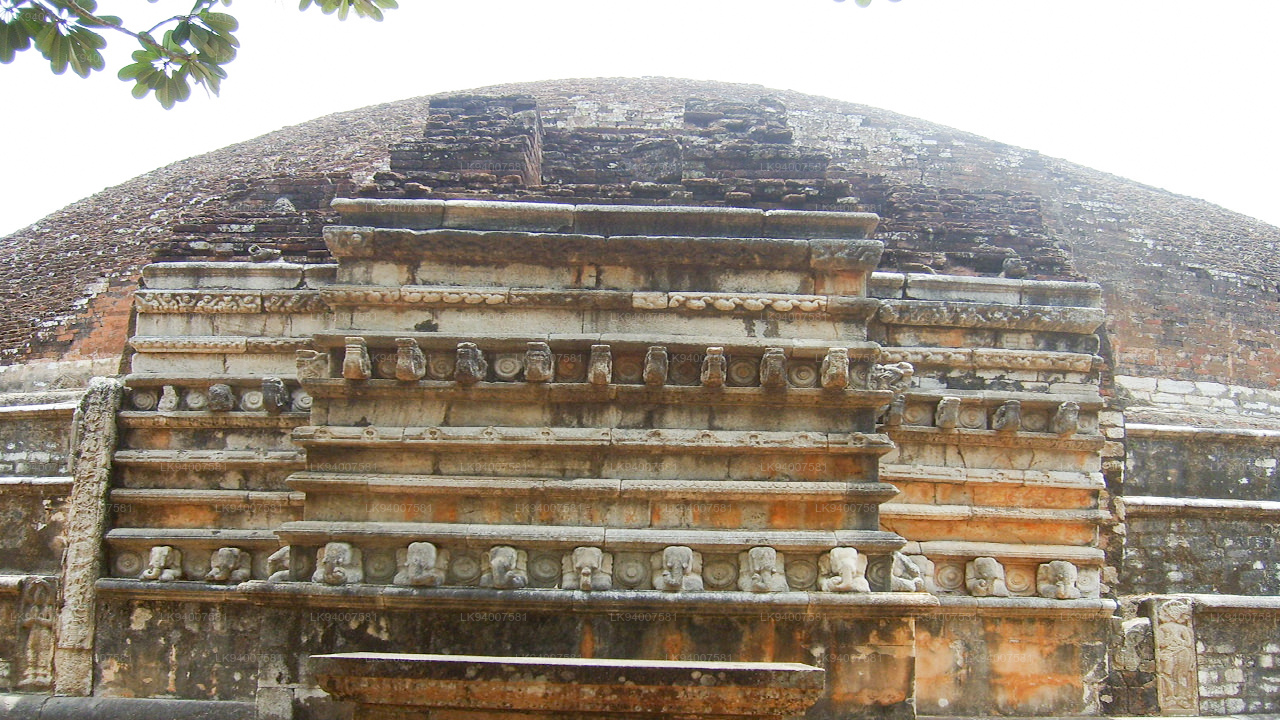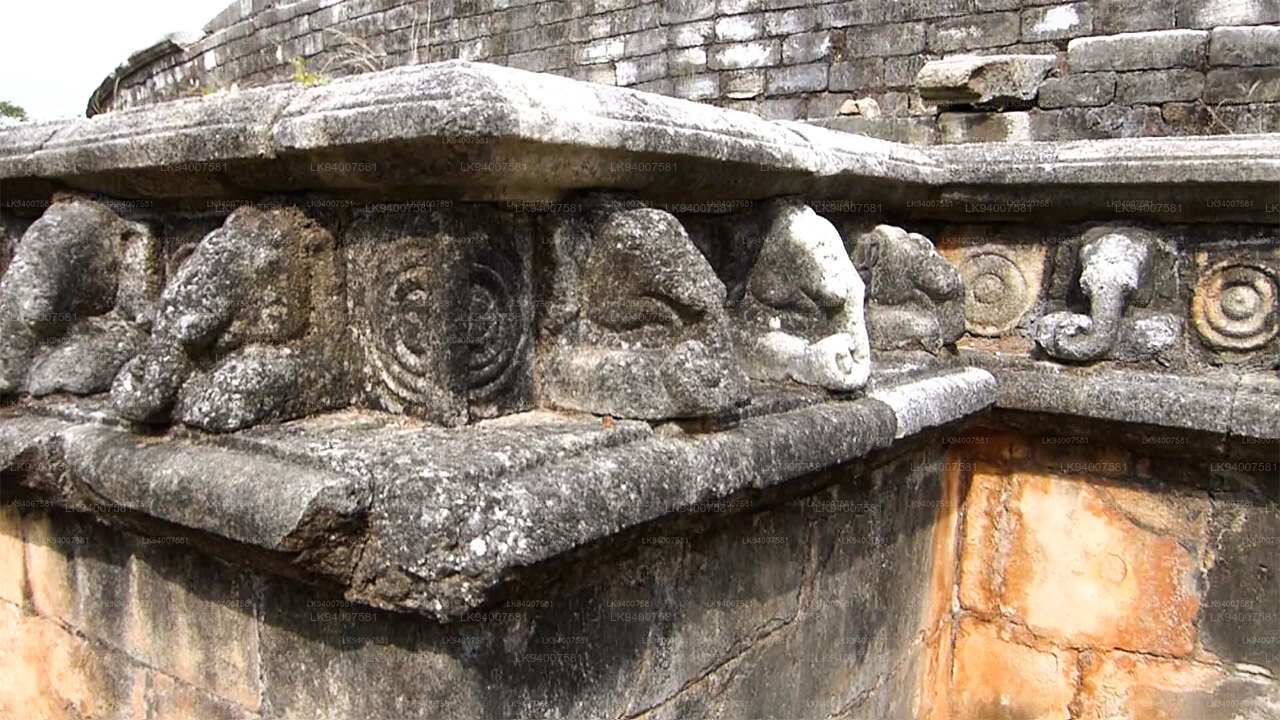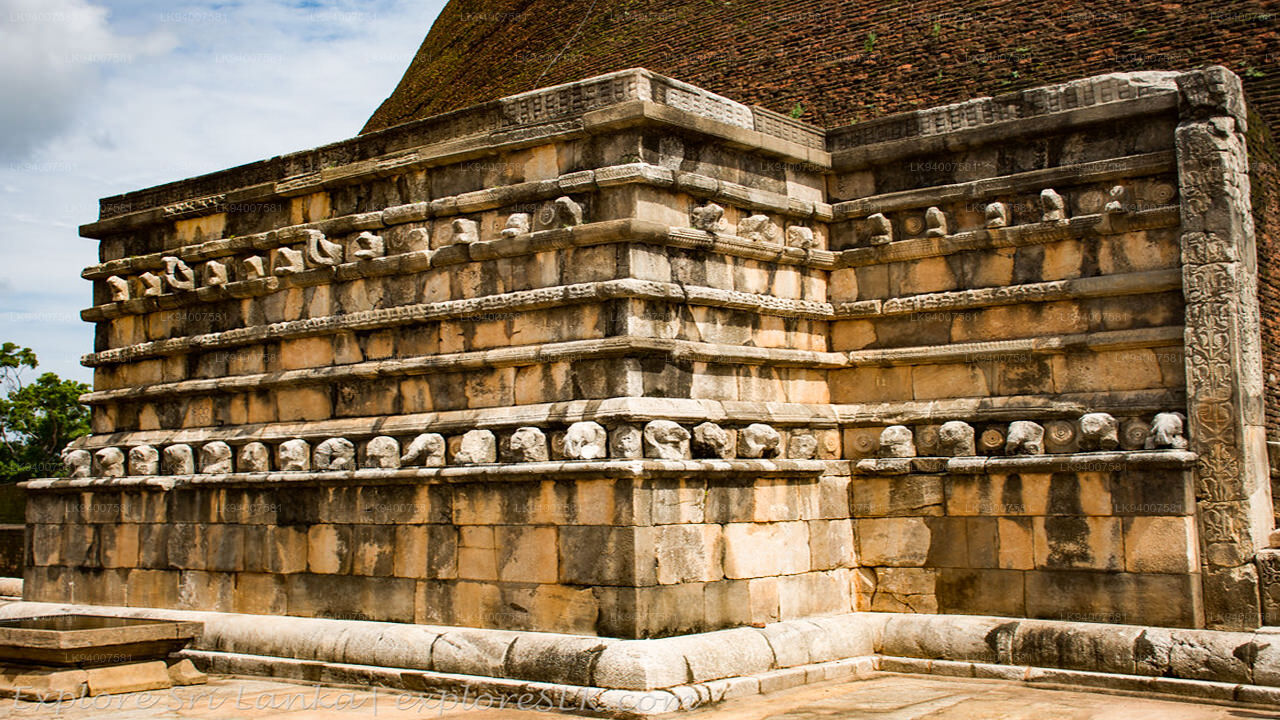
Anuradhapura By
Anuradhapura tilhører den nordlige centrale provins i Sri Lanka. Anuradhapura er en af Sri Lankas gamle hovedstæder og berømt for sine velbevarede ruiner af den gamle lankanske civilisation. Byen, der nu er på UNESCOs verdensarvsliste, ligger 205 km nord for den nuværende hovedstad Colombo i Sri Lanka.
Kantaka Stupa
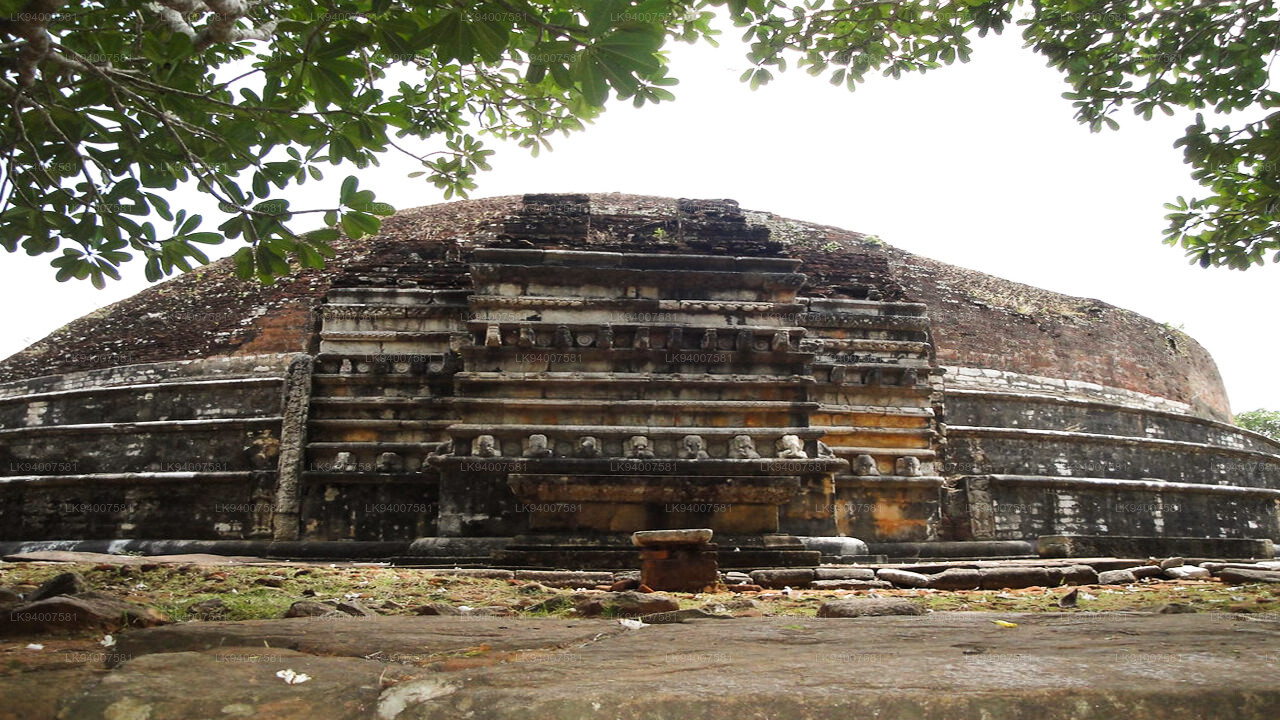
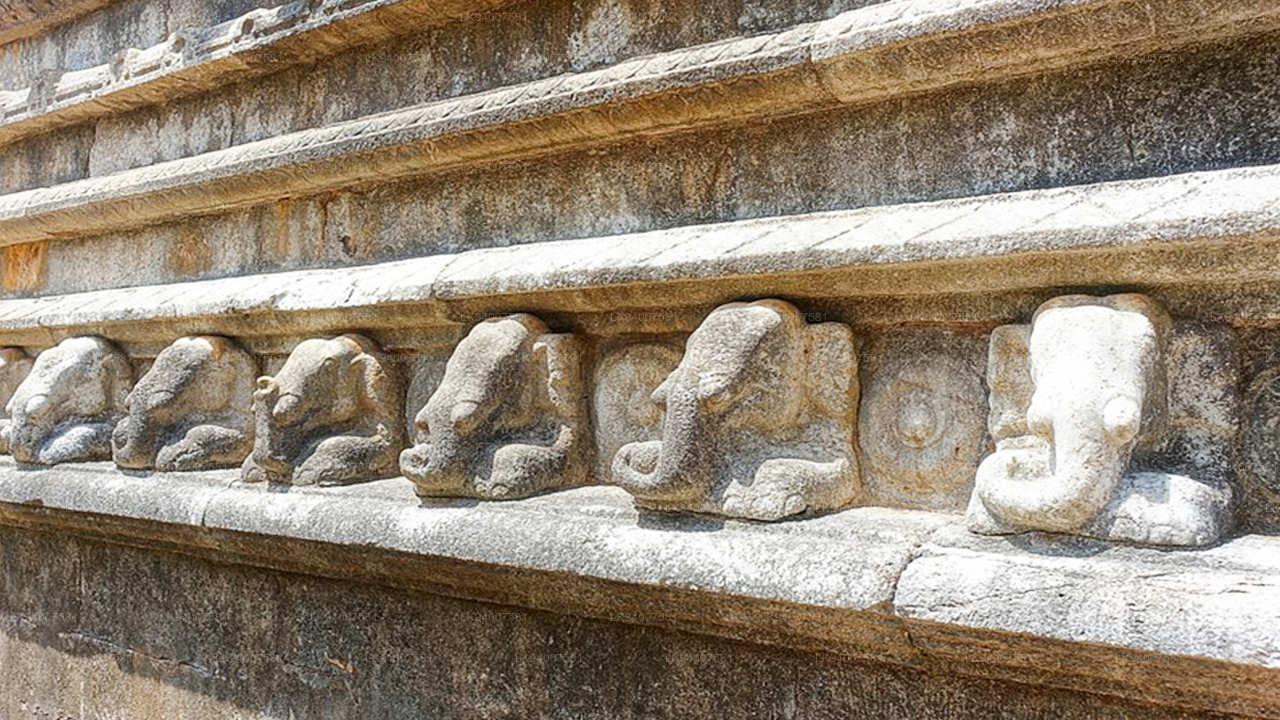
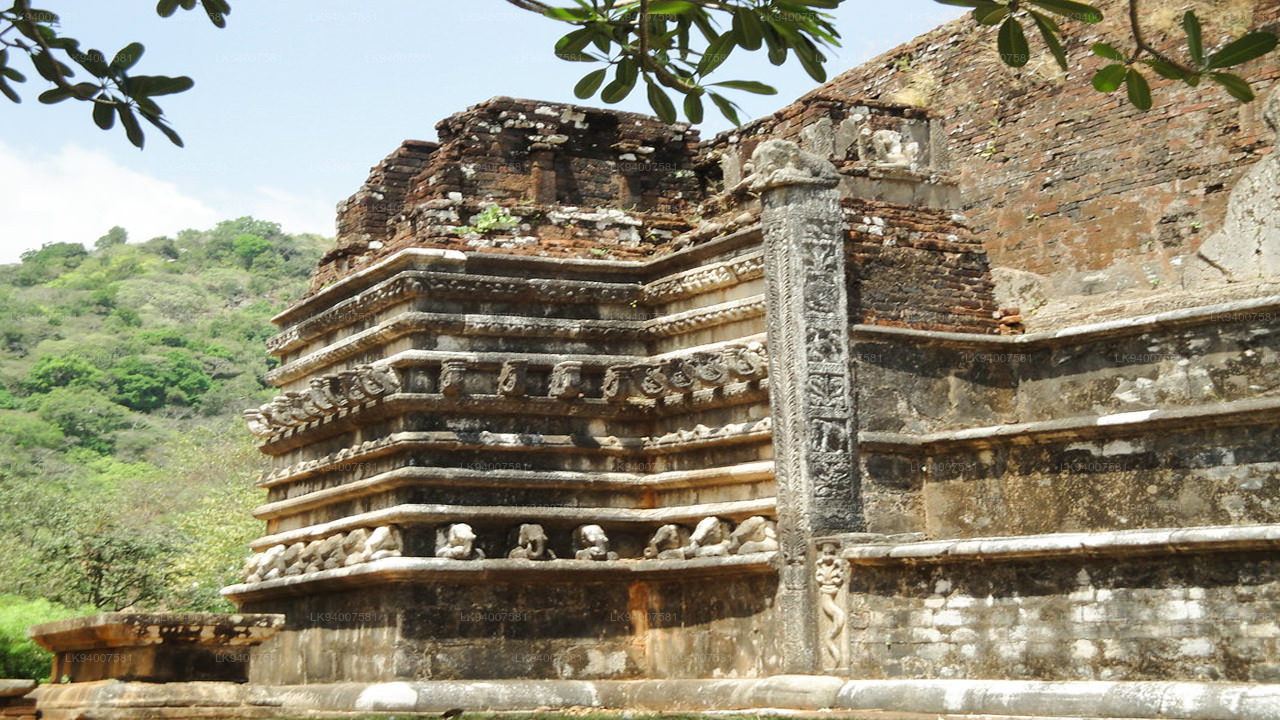
Kantaka Stupa
Kantaka Stupa is a circular stupa having a base circumference of about 425 feet. It has three stepped rims. It has four frontispieces in the four cardinal directions. The frontispiece is called Vaahalkada. All the Vaahalkadas are decorated with sculptures of dwarfs, animals, human, divine figures and floral motifs. One of the most important of the sculptures on the Kantaka Cethiya Vaahalkada is the elephant headed God with two arms. The Saivites call it Ganapati or Ganeesaa. The Ganapati sculptures in the Vaahalkadas of the Kantaka Cetiya have created confusion among the archaeologists and historians. No one could not explain the connection between Ganapati God and Buddhism. Thus, the Sinhalese historians and archaeologists have tried to give some imaginary interpretation.
The four vahaalkadas facing the four cardinal points have different animals on the top of the square pillars - the elephant on the east, the lion on the north, the horse on the west and the bull on the south.
Most of the Indian and Sri Lankan archaeologists believe that there is a symbolic relationship between these animals and the four cardinal directions. But, they differ in associating a particular animal with a particular direction.
History Of Kantaka Stupa
The Sinhalese archaeologists and historians say that King Suratissa have built this Stupa. The Pesavalalu and the frontispiece have been preserved to a great extent. There are ruins of the stupa which are 40 ft (12 m) in height. The monks would have resided in the caves close to the stupa. As this stupa was renovated by King Lajjitissa. There is no doubt that this belongs to the 1st century B.C.
Om Anuradhapura-distriktet
Anuradhapura tilhører den nordlige centrale provins i Sri Lanka. Anuradhapura er en af de gamle hovedstæder i Sri Lanka og berømt for sine velbevarede ruiner af den gamle lankanske civilisation. Byen, der nu er på UNESCOs verdensarvsliste, ligger 205 km nord for den nuværende hovedstad Colombo i Sri Lanka. I den hellige by Anuradhapura og i nærheden findes et stort antal ruiner. Ruinerne består af tre typer bygninger: dagobas, klosterbygninger og pokuna (damme). Byen havde nogle af de mest komplekse kunstvandingssystemer i den antikke verden, beliggende i landets tørre zone, og administrationen byggede mange tanke til at vande jorden. De fleste af de civile er singalesere, mens tamiler og srilankanske maurere bor i distriktet.
Om Nord-Centralprovinsen
North Central Province, som er den største provins i landet, dækker 16% af landets samlede landareal. North Central Province består af to distrikter kaldet Polonnaruwa og Anuradhapure. Anuradhapura er det største distrikt i Sri Lanka. Dets areal er 7.128 km². North Central Province har adskillige potentialer for investorer til at starte deres virksomheder, især landbrug, agrobaserede industrier og husdyrsektoren. Mere end 65% af North Central Provinces befolkning er afhængige af basal landbrug og agrobaserede industrier. NCP kaldes også "Wew Bendi Rajje", fordi der er mere end 3.000 mellemstore og store tanke placeret i provinsen. Sri maha bodiya, Ruwanweli seya, Thuparama dageba, Abayagiri Monastry, Polonnaruwa Rankot wehera, Lankathilake er bange.

